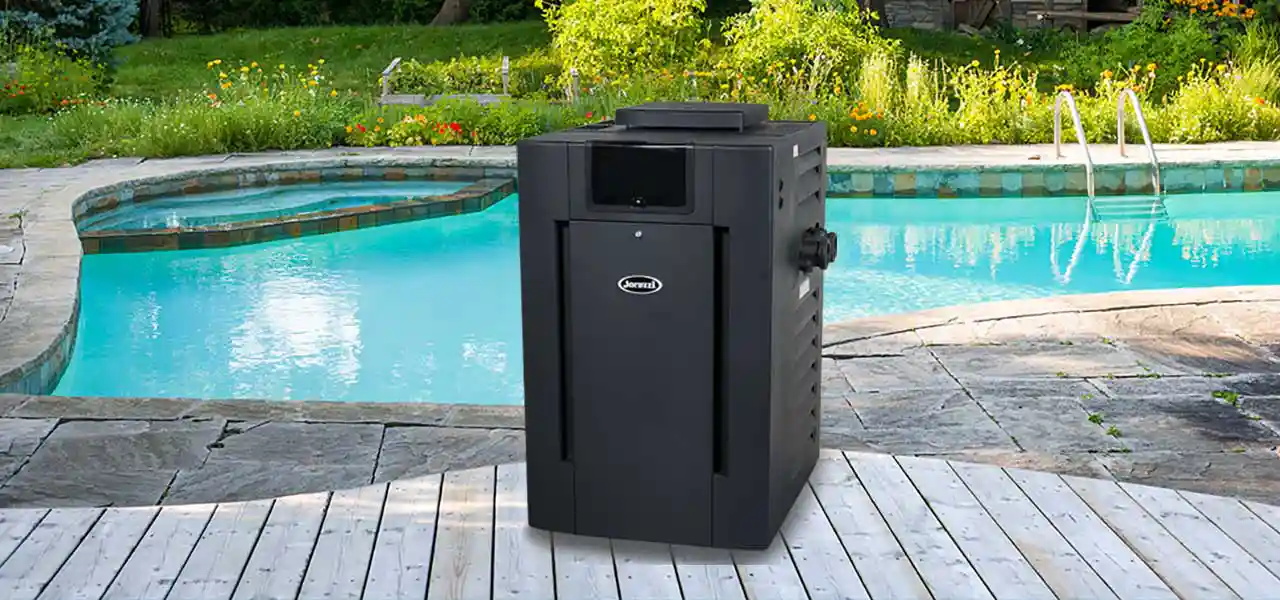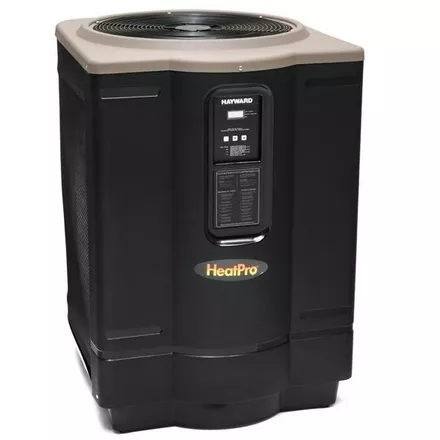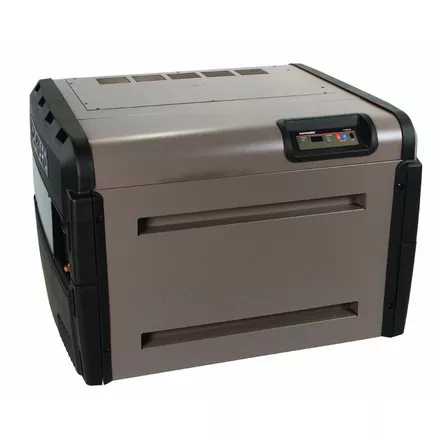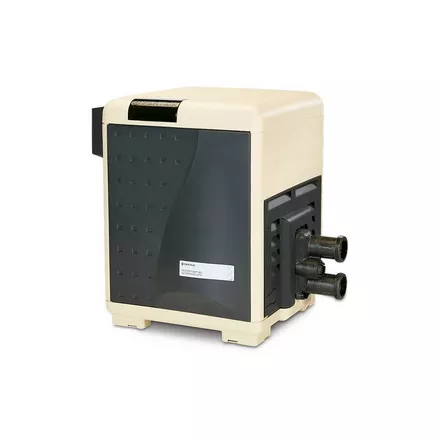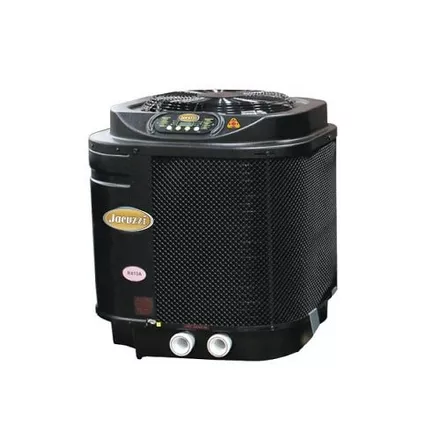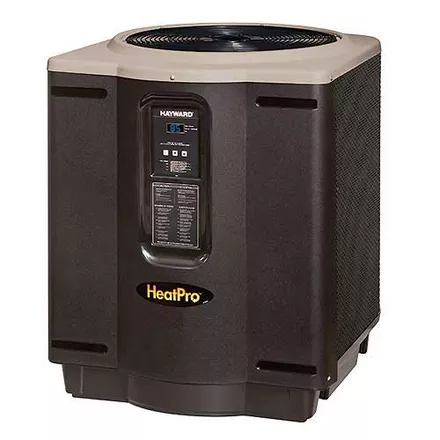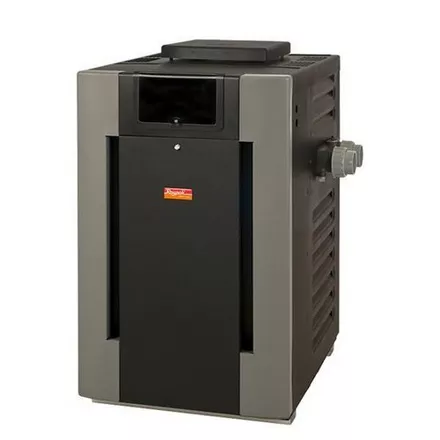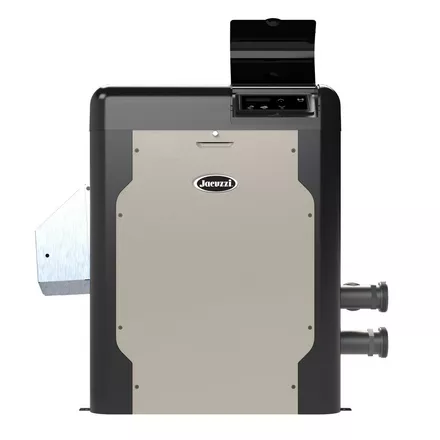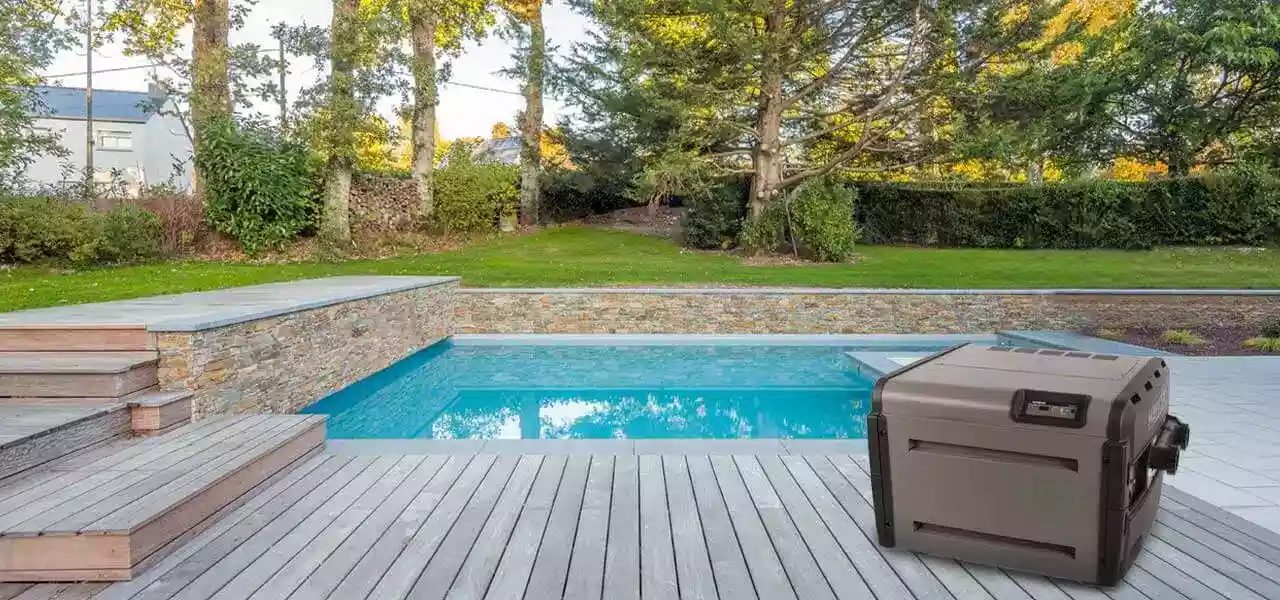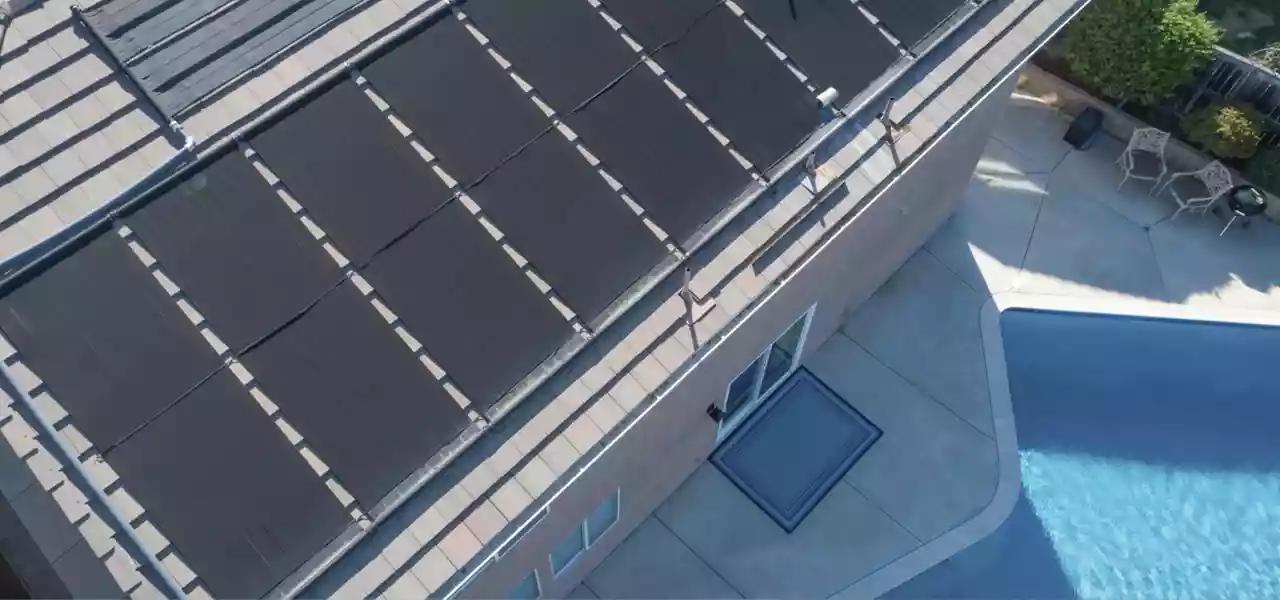It’s a common question: “How long does a pool heater last?” Or rather, how long should a pool heater last? Unfortunately, it’s not a simple answer. The average lifespan for a natural gas or propane pool heater is about 7–12 years, but it’s not uncommon for them to last longer — or sometimes shorter — than that. Factors like water chemistry, quality of the unit, regional climate, and adherence to a regular maintenance routine will determine if your heater will fall on the lower end of the scale or last longer than expected.
Whether it’s a seasoned machine or a brand new unit, you’ll eventually need to replace a few pool heater parts to keep your heater in top shape. As with all equipment, some parts wear out more quickly than others. We’ve assembled a list of the most common pool heater parts to be replaced, as well as the average life expectancy of those parts.
Troubleshoot First!
Before you try replacing any parts on your pool heater, make sure it’s able to function correctly. Is the shut-off valve open, and do you still have fuel? Can the electricity reach your heater, or has the breaker tripped? Is the heater sized correctly for your pool and pump, and is the flow rate where it needs to be? Also, is the heater turned ON, and the thermostat set higher than the current pool temperature?
Additionally, inadequate water flow can cause a heater not to work. A dirty filter, clogged skimmer, malfunctioning pump, or closed off valves can all slow or stop the flow of water, meaning the pressure switch won’t close to trigger the heater. In some cases, insufficient water flow or air in the lines can damage the heating components and other internal elements of your heater.
Making Heater Repairs
Once you’ve finished troubleshooting for underlying issues, it’s time to identify the faulty pool part. Many pool heater parts are very simple to replace, and just about anyone can handle it themselves. However, if you’re dealing with malfunctioning gas valves or damaged wiring, it’s best to seek the help of a qualified professional. Better to be safe than sorry, especially with pool heaters!
It’s worth noting that if your heater is still under warranty, making repairs on your own may void the warranty. On the other hand, if your heater is outside the warranty window, DIY repairs can be significantly cheaper than the alternative. Most warranties will not cover damage from scale buildup and corrosion, which are conditions caused by poor water balance. Remember to turn off the pool pump, as well as all gas valves and electricity to the pool heater, before attempting to replace parts or make any repairs.
Gaskets and O-Rings
Life Expectancy: 1–3 Years
Gaskets and O-rings dry out, warp, and crack as they age, causing leaks in and around your pool heater. Luckily, this problem is easy to spot and relatively simple to fix. To help prolong the life of your header and union O-rings and gaskets, coat them with pool lubricant at least once per year. Many pool owners do this during their pre-winter maintenance routine, or replace those pieces anytime the heater is open. Gaskets and O-rings are the most frequently replaced parts, and since they’re not very expensive, it’s always a good idea to have a few extras on hand. It’s not a matter of if you’ll need to replace them, but when.
Switches and Other Electrical Parts
Life Expectancy: 3–7 Years
There are several switches and other electrical components that can go bad on a pool heater. Power surges wreak havoc on electrical parts, but it’s not uncommon for switches to break down from regular usage alone. For these repairs, a multimeter testing tool will help you locate an incomplete circuit. To diagnose faulty switches, you can also try using a “jumper wire” test to bypass the switch and see if that makes the heater work again. Flow or pressure switches, high limit switches, thermostats, and heater on/off switches are some of the more common replacement parts needed for a pool heater. Safety fuses can also blow out from time to time, a transformer can go bad, or rodents may chew through wiring. When in doubt, don’t hesitate to seek the help of a qualified professional, especially when dealing with electrical components.
Bypass Valves
Life Expectancy: 7–12 Years
Damaged bypass valves will make your pool heater inefficient, and may even cause lasting damage. Too much or too little water flow can reduce heat gain and damage your heater components. The internal bypass valve is meant to provide optimal flow rates, but it can fail from corrosion or material breakdown. Make sure the internal and external bypass valves are both secure, and adjust as needed. If the bypass valve is damaged or if readjustment doesn’t resolve the problem, you’ll need to replace it.
Heat Exchanger
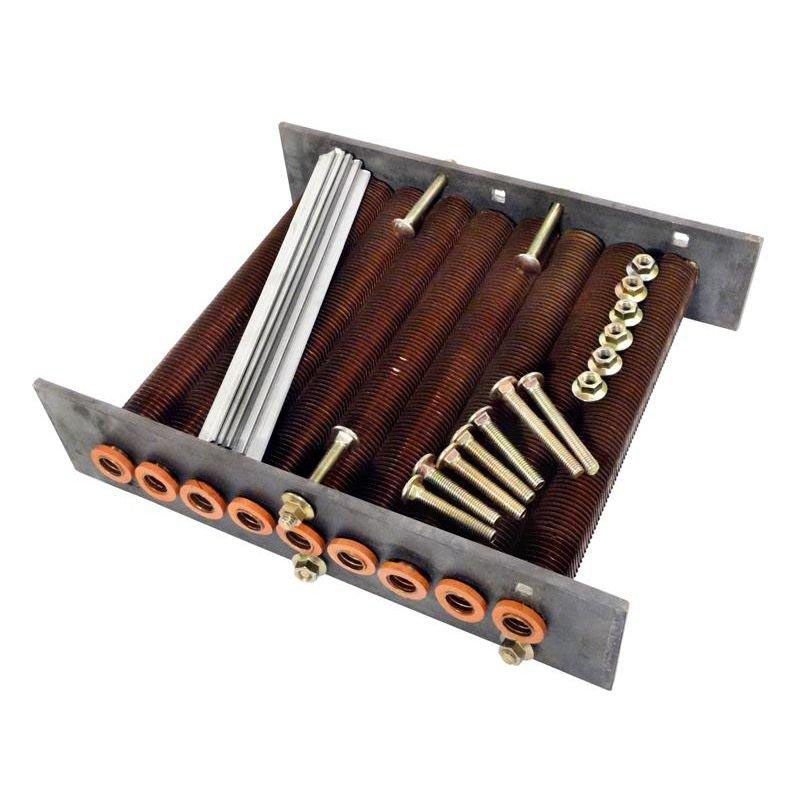
Life Expectancy: 5–10 Years
Heat exchangers are the most expensive part to replace on a pool heater, so when this part fails, many pool owners will opt to purchase a new pool heater instead. Freeze damage or unbalanced pH and Total Alkalinity are the most common reasons this part fails. Expanding ice can break the exchanger open and cause leaks, while acidic pool water will cause the metal to deteriorate over time. Pools with chronically high water hardness can also make heat exchangers malfunction because of excessive calcium scale buildup. Misplaced chlorinators (before the heater) or dropping chlorine tablets directly into the skimmer will rapidly damage the copper heat exchanger thanks to concentrated chlorine levels passing through the unit. If you have an automatic chlorinator, it should always be the last piece of equipment the water passes through before returning to the pool.
Burner Parts
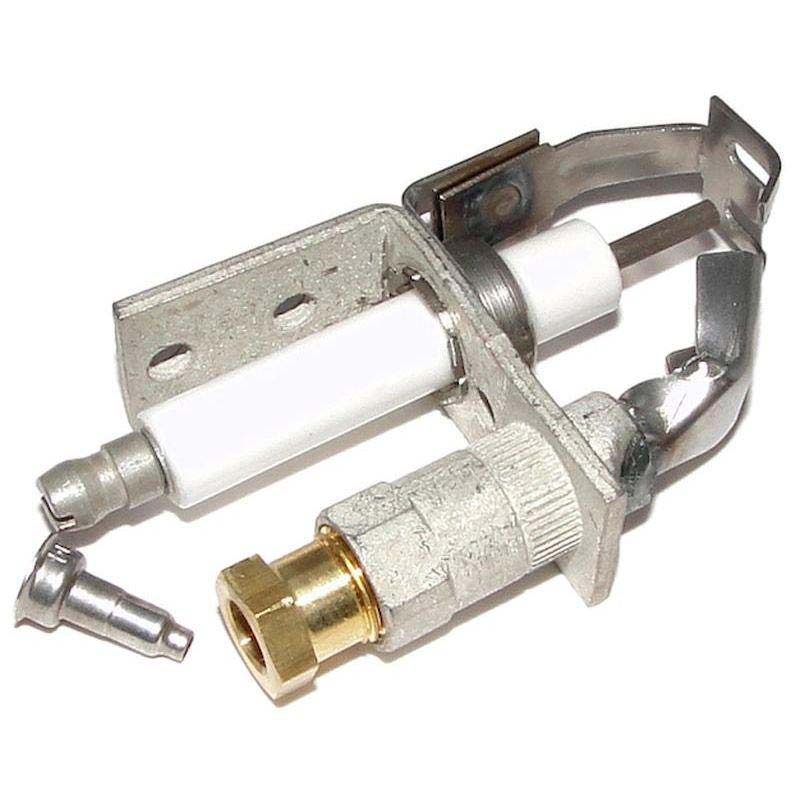
Life Expectancy: 5–10 Years
The pilot orifice may become clogged from dust, rust, small bugs, and other debris from time to time, which usually just requires a quick cleaning. If you have a millivolt heater and the pilot light won’t stay lit, you may have a faulty thermopile. Test the thermopile with a multimeter, and replace it if you get a low or no output reading. Check all burner parts for cracks and loose connections, and repair or replace as needed.
Manifold or Header

Life Expectancy: Varies
The most common reason for a manifold or header to fail is because of freeze damage. If you don’t properly drain and winterize the heater, beware of expanding water in freezing temperatures. This leads to cracks in the header, and will show up as a major leak when you reopen the pool. Most pool heaters have a front and a rear header or manifold, both of which have drain plugs.
When to Replace Your Pool Heater
Truthfully, you can keep repairing your pool heater as long as you can find the parts for it. Just be aware that in time, the efficiency of the unit will go down, often as a result of inadequate servicing and maintenance. However, at some point, the expense of the part(s) will come close to or exceed the cost of a brand new unit. Either that, or the efficiency will get to be so low that you cringe at the thought of firing up the heater. When this happens, it’s time to upgrade! Out with the old, and in with a new, more efficient pool heater.
The world of pool equipment is ever-changing as new technologies emerge. New pool heaters continue to grow more energy efficient, more environmentally friendly, and more cost effective for pool owners. When you’re ready to make the change, look no further than In The Swim. We carry heaters from all the industry’s most-trusted brands, including Raypak, Hayward, Pentair, and Jacuzzi. If you need help choosing your next pool heater, simply call or email our customer support team.

